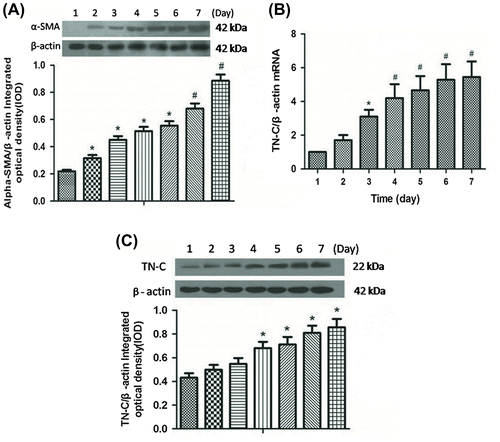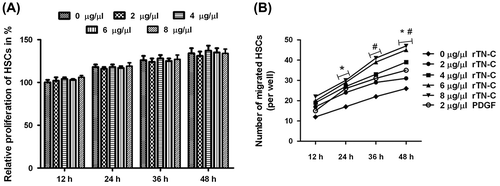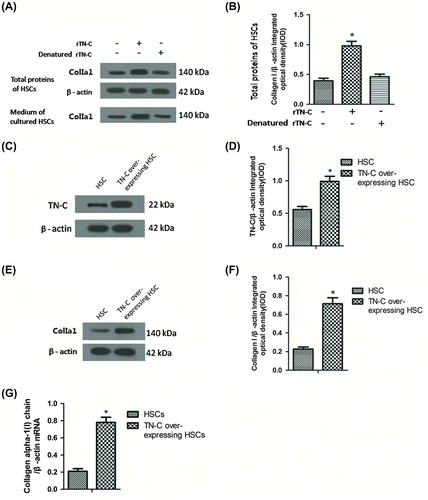Figures & data

Fig. 1. TN-C level was being increased in activated HSCs.

Fig. 2. Migration of HSCs was enhanced by the rTN-C treatment.

Fig. 3. Expression of Collagen I was induced by the rTN-C protein treatment in HSCs.

Fig. 4. TGF-β1 and α9β1 were essential in the induction of collagen I by TN-C.

